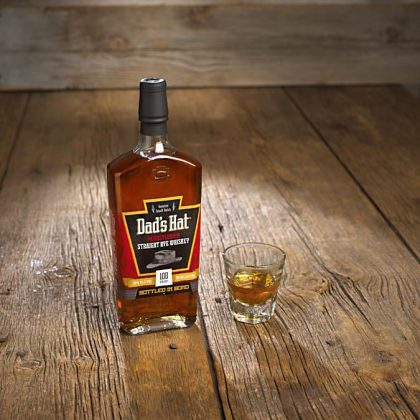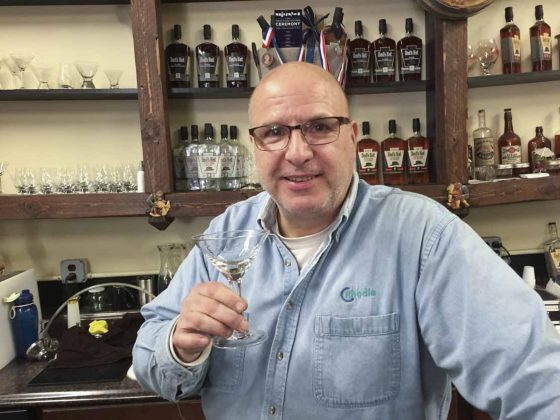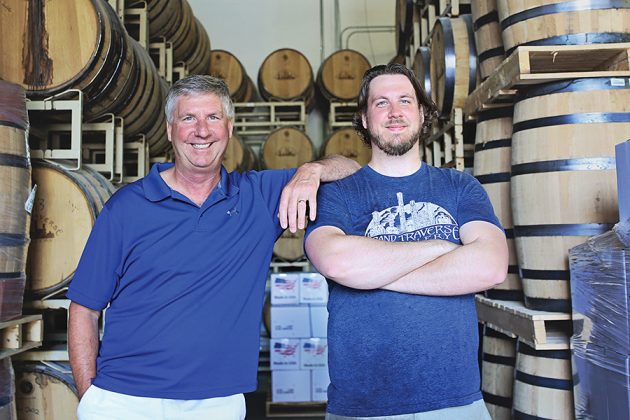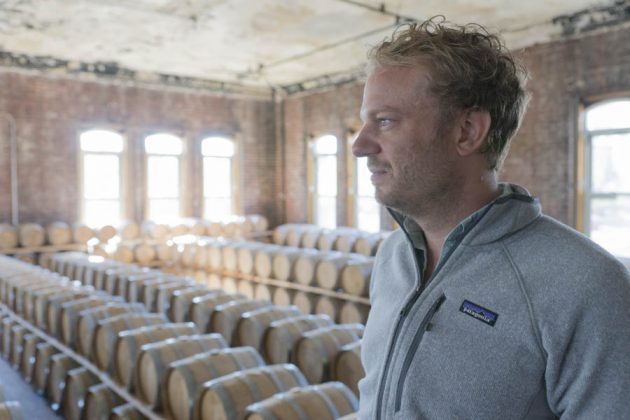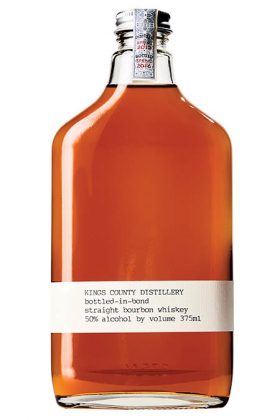Bartenders and bargain hunters have rejoiced in recent years with the return to prominence for bottled-in-bond, or bonded, whiskeys. I’ve long said the best $20 you could spend in a liquor store was on bottom-shelf bonded bourbon. Now, though, craft bonded whiskeys are starting to emerge, and while they may not be the bottom-shelf bargains of their big-name forebears, the development is nevertheless massively exciting.
Consider that five years ago there were fewer than 20 bonded whiskeys on the market, and the bulk of them were coming from either Heaven Hill or Jim Beam. Therefore, with the arrival of guaranteed four-year-old craft whiskey, an early wave of distilleries is having what you could call a maturation celebration.
“It’s great that we are all coming of age,” said Phil Brandon, founder and distiller of Rock Town Distillery, on craft distilleries joining the bonded party. Rock Town’s bonded bourbon hit shelves in June 2015, becoming one of the very first, if not the first, bonded release from an upstart distillery. “I have a lot of respect for the other guys doing bonded whiskeys and it means a lot to be a part of the group,” Brandon said.
“I guess you could say that a bottled in bond is a way to signal to the world that we are taking our whiskey making seriously,” said Herman Mihalich, founder and distiller of Mountain Laurel Spirits about their Dad’s Hat Pennsylvania Rye, the bonded rendition of which is available for sale at the distillery. “Adding a bottled-in-bond whiskey to our lineup has been another source of pride.”
What is Bottled in Bond?
So what does it take to be bottled in bond? The Bottled in Bond Act of 1897 set the standards: Bonded whiskey must be aged for a minimum of four years, stored under government supervision in a bonded warehouse, distilled by one distillery in one distilling season and bottled at 100 proof.
Really, it was intended as a way to protect consumers by guaranteeing what was in the bottle and from where it came. While much has changed since then, distillers taking the leap today are often doing so to send that very same message to consumers.
“Those three little words ‘bottled in bond’ help us to convey that quality and authenticity in a new way,” said Scott Harris, co-founder and general manager of Catoctin Creek, whose Rabble Rouser whiskey will receive bottled-in-bond labeling with next year’s release. The whiskey has already met the requirements, but releases have not been labeled as such, yet. “The product has always been exceptional, but now we can show that a little better on our label, too.”
A Key Craft Bonus: Distillery Information Requirement
Beyond conveying quality, there’s another key reason why more craft distilleries are, and should be, looking to bonded whiskey. In addition to the above requirements, in order to be bottled-in-bond the distillery’s name and location must be indicated on the bottle. Pending much-needed, long-overdue and ever-delayed regulatory updates via the TTB, this makes bonded whiskey the only whiskey mandated to offer a “distilled by” designation, what many consider the holy grail of spirits labeling reform.
If such a regulation were implemented across the board, it would offer a pretty swift resolution to the issue of unknown-source distilleries, clearly indicating where whiskeys were actually being distilled and by whom. A craft distillery selling a bonded whiskey offers a no-questions-asked guarantee to the confused customer at the store as to the origins of their whiskey.
“I am constantly amazed when I read labels of products on the shelves that instead of saying ‘distilled by,’ we read ‘produced’ or ‘manufactured’ or just ‘bottled by’ the company on the label,” said Kent Rabish, owner and president of Grand Traverse Distillery. “My hope is customers will learn how to read labels and understand what they’re purchasing and the type of distilleries that they are supporting.”
Consumer education is of paramount importance to these distillers so the designation will have meaning.
“We’re all trying to show that we’re making great whiskey, and what we’re doing, more than the bigger distilleries, is educating the customer,” Brandon explains. “The average consumer has no clue what it means. I think as each craft whiskey distillery does more to raise consumer awareness, the stronger the whiskey market becomes.”
Though Catoctin Creek’s Rabble Rouser qualified as bonded, the distillery did not initially pursue labelling it as such because it didn’t mean anything to consumers. “When we started putting away Rabble Rouser back in 2010, and even when we started releasing it in 2014, bottled in bond was not as well known among the whiskey public,” Harris said. “We didn’t see a value in putting it on the label at that time. Obviously, since then, the whiskey public has gotten bigger and smarter, and bottled in bond has been resurrected from history as a designation of quality and ‘made-not-bought-elsewhere’ authenticity.”
Bonded Rabble Rouser has already been bottled, but will not be released until next February, to help celebrate the distillery’s 10th anniversary.
With an increasingly engaged whiskey-drinking public, hopefully it’s a trend which continues to build on itself. “Once bottled in bond becomes more common, I would expect people will take it very seriously,” said Colin Spoelman, co-founder and master distiller of Kings County Distillery, which released a bonded bourbon in March 2017.
And even if customers don’t know specifically what “bonded” is, some at least recognize that it is different. “The exact definition I think is a little more ambiguous for the ‘regular Joe,’” Harris said. “But I do think they view this as the ‘best of the best’ designation.”
Spoelman agrees on the point. “They know it’s special, that it’s government-sanctioned, and the word ‘bond’ suggests truth and authenticity in ways that other terminology, i.e., ‘craft’ or ‘small-batch,’ don’t quite cover,” he said.
“I think a small number of customers do [know what it means], but the vast majority I’m certain do not,” Rabish said. “I believe that the more customers can read and learn about whiskey, including bottled in bond and how to read a whiskey label, [the more it] will help all craft distilleries who actually make what they sell.”
“The merchant distillers, I believe, are harming the market in that they are clogging up the limited shelf space devoted to craft,” Rabish continues. “The problem is if you’re actually distilling your own whiskey, the costs are much higher than buying industrial whiskey. The higher price tag of true craft that will sit on a shelf alongside merchant distillery products puts us at a disadvantage. Most customers have no idea who makes the whiskey that’s in the bottle that they’re purchasing. What they see is two very different prices for a bottle of whiskey, and the lower price has an advantage a lot of the time.”
Bonded whiskeys may prove to be an invaluable tool to have in one’s war chest in this ongoing battle for craft distilleries. “We were constantly being put by retailers and customers into the same bucket as sourced whiskey, which is a completely different product than what we are making,” Spoelman explains.
“It was hard to cut through the noise to explain the difference between our product, which we actually make, and the other ‘craft’ bourbon,” Spoelman continues. “Sourced labels can’t make bottled in bond. The great thing about whiskey is that it’s been around for so long—and the laws have been around for so long—that history had already given us a great marketing tool to explain how we were different from the sourced brands, but it takes four years of patience to get there.”
Challenges of Bonded
And that brings us to the hefty challenges of releasing a bonded whiskey. While bonded whiskey from big distilleries has typically been left on the bottom shelf, devoid of marketing dollars or attention, craft whiskeys have to push much harder to get a bonded whiskey to market. That includes, quite simply, reserving enough stock.
“Being patient was the most challenging aspect of our bottled-in-bond project,” said Mihalich. “After passing the straight whiskey milestone at two years, it is tempting to dump those barrels right away. So, waiting takes some discipline, but it is also really fun to discover how the whiskey evolves over time.”
It’s a recurring theme. “For me, it was the wait,” replies Brandon to the question of the toughest challenge in a bonded release.
“For us, the toughest part of a bottled-in-bond product is watching the clock tick,” said Rabish. “When a distillery is young, you need income and just leaving the whiskey alone for the period of time you need is difficult, but in the end, it’s worth it.”
For Harris it was not only the wait but also having enough product remaining while battling off some particularly thirsty angels. “The angel’s share on a 30-gallon barrel for four years is vicious! In the first release, we lost a full third of the barrel to the angels,” he explains. “That really hurt. As we continue this Rabble Rouser program, we will be graduating it to 53-gallon barrels, hopefully to alleviate this problem somewhat.”
Spoelman—who also had his first bonded label misclassified as straight bourbon, rather than bottled in bond—further details another issue for distilleries without boundless barrels lying around: the problem of distilling seasons. “One thing that remains tricky is blending within seasons,” he said. “We only have about 20 barrels per season for now, and actually quite a few get rejected for being outside the flavor profile we want. Those barrels can’t be blended into future bottled-in-bond batches, because they are a different season, so we have to find another use for them.”
Looking Ahead
Challenges be damned. As more distilleries continue coming of age, you can be sure that more will be eager to join the bottled-in-bond club. “As with everything in this industry, I’m sure the best of the best will start to issue their own bottled-in-bond releases in the coming years,” Harris said.
“I think you’ll see distillers across the spectrum getting into bottled-in-bond releases, just because as bourbon hype goes up, more drinkers will be looking for that authenticity,” Spoelman said. “To put it succinctly: I think brands aren’t very interesting, but distilleries are. Bottled in bond gets to the heart of that. It must be made by a distiller (a person) at a distillery (a place) not by a marketer or a brander or a blender or a bottler. And that’s always what has interested me about it. The challenge of making good whiskey is primarily a distiller’s concern. A bottled-in-bond product shows that best.”


